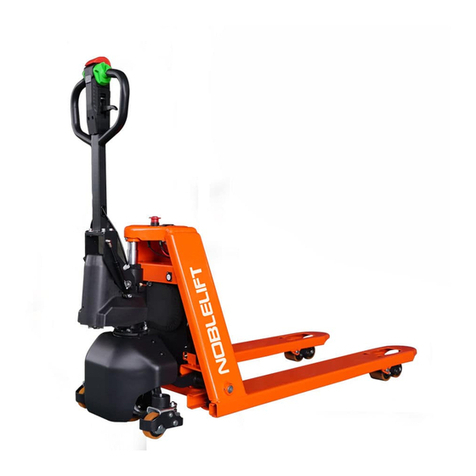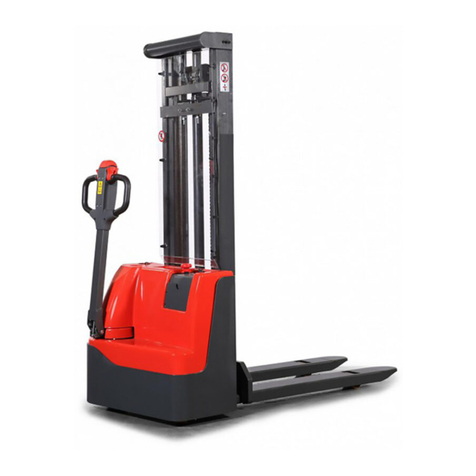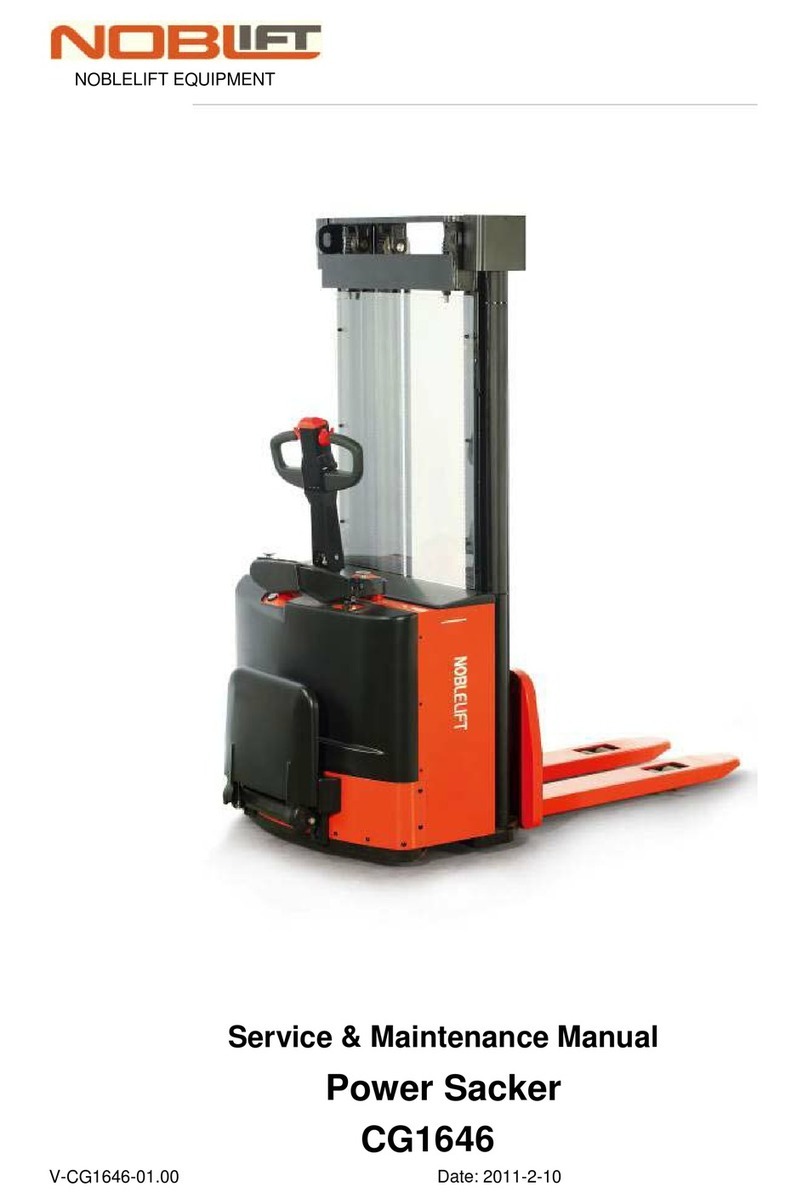
The adhesive label on the stacker must be always legible. Do not use the stacker for purpose
except lifting or lowering load.
Do not make casual repair. If repaired by unprofessional people, the safety modulus of the
machine could be altered. In case damage happens, repair it in the local place according to the
instruction or contact to us.
Carry out all the work and maintenance according to the norms after using it.
4. WORKING NORMS FOR THE OPERATOR
Do not worry about how to operating this stacker, the characteristic of this stacker is facility and
easy to operate.
The two function of the brakes
The rear wheels are equipped with brakes which with two functions, it can control the moving
of forward and backward effectively。Step the pedal of the brake backward, the stacker will be
braked. Step the pedal of the brake forward, the stacker will travel normally. The stacker
should be braked under the condition as following: A, stop at the slope; B, during charging; C,
when loading; D, leave unused.
The forward/backward/swivel of the stacker
Open the brake of the rear wheels, leave the two wheels at the state which can swivel freely.
Take hold of the armrest, push the stacker ahead, the stacker can move ahead. In the same way,
pull the stacker backward, the stacker will fall back. We use universal wheels on this truck, so
it’s very easy to swivel and swivel into any direction. It’s only need a small space because it
can be freely swiveled at the original position. If one of the brake is locked, the stacker will be
swiveled on an even keel according to the centre of a circle.
Lifting and lowering of the forks
Press the button of power to “ON”, then press the “ ” or “ ” to control the lifting
and lowering of the stacker. (Attention: Before lifting or lowering the forks with load on the
forks, please lock the rear wheels of the stacker to avoid moving of the stacker during
lowering and lowering.)
Load of the stacker
According to the deferent goods, this stacker can use the three kinds of shelves as double
forks, single fork, and platform. The ways of how to use these shelves are as follows:
A. Double forks ( be fitted for lifting the common load)
(1) Drive close to the load.
(2) Lift the forks below the load.
(3) Drive forward, bringing the forks under the load.
(4) Lift the load to get the load.
(5) Back the stacker with the load to make the descent if possible.
(6) Lower the load slowly.
B. Single fork (be fitted for lifting the cylindraceous load)
(1) Drive close to the load.
(2) Drive the fork to the centre of the circle of the load.
(3) Drive forward, extend the fork inside the cylinder.
(4) Lift the load to get the load.
(5) Back the stacker with the load to make the descent if possible.






























